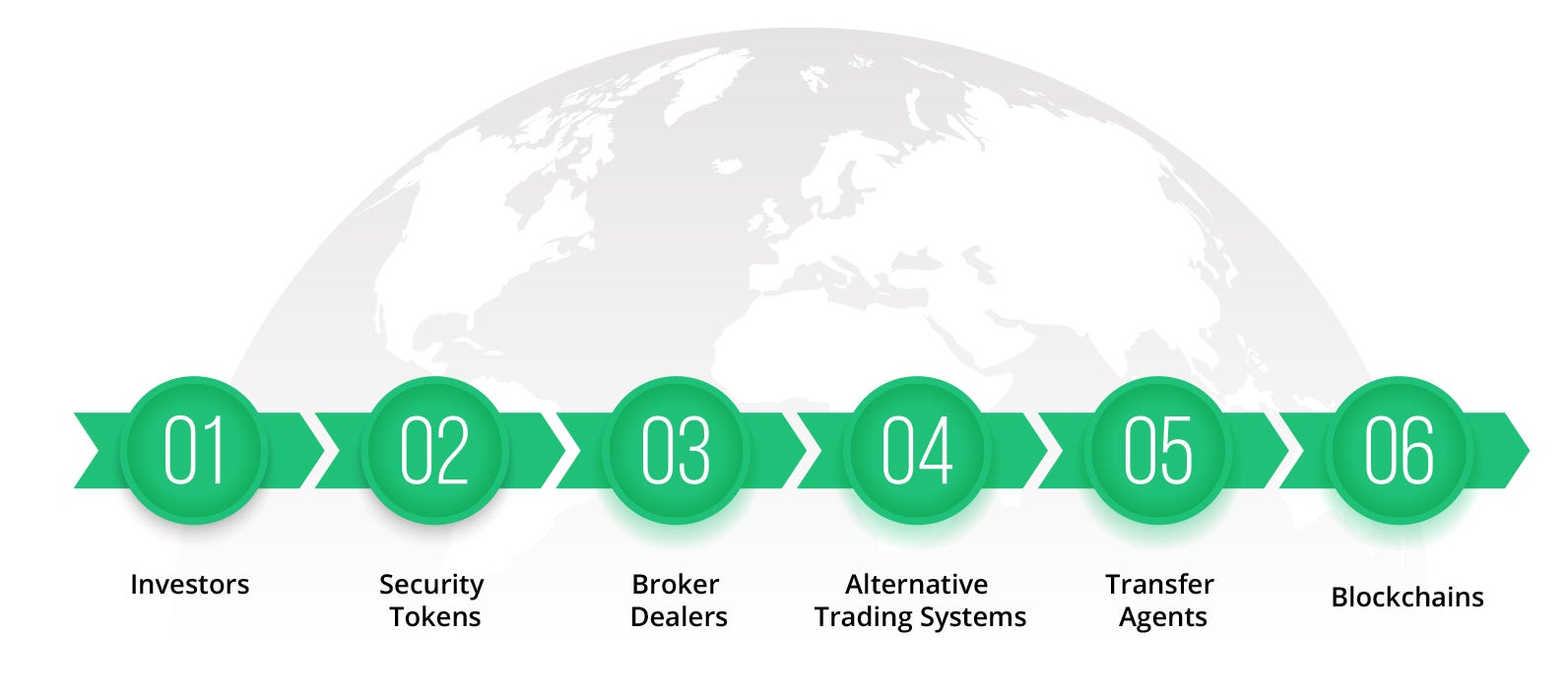Introducing a New Standard for Digital Stock Certificates: ERC-1450
It is clear by now that one of the most important revolutions brought about by blockchain technology will be the digitization of the world: transforming assets into tokens that represent the ownership of trillions of dollars worth of securities and real estate. However, in order to make that transition possible, there needs to be a marriage of decentralized applications and regulation. Why regulation?
It turns out when you divide assets into small pieces and sell those pieces to investors, those fractional pieces of an asset instantly become securities. Securities are highly regulated by the Securities Exchange Commission (the SEC) and the 50 State Administrators. Effecting transactions of securities requires the intermediate to be a Broker-Dealer.
In the past few years, American business received a huge win with the signing of the JOBS Act in 2012. With this act, ordinary investors were now able to purchase shares in startups, opening up the private securities market to a much larger audience than the small pool of wealthy, accredited investors.
Combining the JOBS Act with tokenization, there is now an opportunity to revolutionize the securities marketplace.
StartEngine has written a white paper to explain how the ecosystem works for issuing and trading security tokens.
ERC-1450: the birth of tokenized securities
Announcing ERC-1450, this new open standard has merged both the decentralized and trustless blockchain with the world of regulations for the first time. You can think of ERC-1450 as a standard for creating digital stock certificates.
How does it work?

With the Ethereum blockchain, a smart contract can have a trusted source while still being decentralized. ERC-1450 uses a registered transfer agent as the source for maintaining and updating the ownership of the securities while allowing the blockchain to publicly display the ownership of all of the tokenized securities. A transfer of ownership can be done directly between a buyer or a seller or through an SEC-registered Broker-Dealer (this second option is more common).
What is a registered transfer agent?
This is a company that is registered with the SEC and has been hired by the issuer of securities to be the record keeper. When a company issues shares using Regulation A+, Regulation D or Regulation Crowdfunding, for example, the records of each shareholder are maintained by the company or delegated to a registered transfer agent.
The transfer agent is in charge of keeping the records for each shareholder but also of recording any transfer of ownership between a buyer and seller on behalf of the company. In short, the transfer agent is not a broker-dealer or a trading platform; it is just the record keeper. To make ERC-1450 work with securities regulation, each token issued with ERC-1450 has a record of the shareholder details kept with the transfer agent.
The first SEC registered transfer agent compatible with ERC-1450 is StartEngine Secure, owned by StartEngine Secure LLC, a wholly owned subsidiary of StartEngine Crowdfunding Inc.
What is a Broker-Dealer?
It is a company that has registered itself with the SEC and is also a member of FINRA, the principal regulator and watchdog for Broker-Dealers. There are thousands of rules that must be followed when selling securities to investors in order to be in compliance with the law. Most of these rules were created in 1934 when the Securities Act of 1934 was voted into law by Congress and the SEC was formed.
What is an Alternative Trading System?
This is a relatively recent regulation that was enacted to help remove the monopolies that the national markets, such as NASDAQ and the New York Stock Exchange, had on the trading of securities. An Alternative Trading System, or ATS, permits buyers and sellers to transact with national market securities outside of the major exchanges. An ATS is part of a broker-dealer, and it is regulated by FINRA, unlike the exchanges which are self-regulated.
How do companies issue tokenized securities?
The transfer agent receives the list of new shareholders with their personal information and shareholdings from the company or the broker-dealer issuing or effecting transactions of them on behalf of the company. The transfer agent records them in its secure database and then executes ERC-1450 code to build a new smart contract for the issuer. Each class of security has a smart contract representing the list of shareholders along with their holdings. The new investors receive the Ethereum address combining all of their securities and because ERC-1450 is a derivative of ERC-20, any wallet or cold wallet device can display them.
How does a shareholder sell shares to another investor?
This is done by the Broker-Dealer who operates an ATS to allow buyers and sellers to meet and trade. If a seller wants to post shares, the ATS will send a message to the transfer agent to inquire if the shares are available and clear to trade. If the transfer agent says yes, then the ATS will place a temporary block on the shares to avoid double selling.
When a match is made with a buyer on the ATS, the broker-dealer will complete the transaction and send the transaction details to the transfer agent to record it. The transfer agent will then update both the seller and the buyer records in the Secure database and then executes the issuer’s ERC-1450 smart contract to transfer tokens from the seller to the buyer. If no match is made, then the ATS will remove the block it previously placed on the shares.
What happens if an investor is hacked or loses its private key?
The investor simply needs to send a notarized sworn affidavit of the loss to the transfer agent. The transfer agent will cancel the hacked or lost tokens and issue new tokens. The investor and their investment are now whole again. This is critical because properly issues securities cannot be lost or inaccessible. These are real assets with owners. You cannot just “lose” securities.
Has ERC-1450 been adopted?
StartEngine is the developer of ERC-1450 and is using it to issue tens of thousands of tokenized securities sold initially on StartEngine. If and when StartEngine’s broker-dealer becomes registered with the SEC and its ATS, called Secondary, is available, it will use ERC-1450 for transacting securities as well. StartEngine is in discussions with other registered transfer agents and ATS operators to also support this standard.
Is the Scalability of Ethereum An Issue?
No, because ERC-1450 does not use Ethereum to match buyers and sellers, nor does it use it for completing a transaction. ERC-1450 only uses the Ethereum blockchain to display digitized securities after transactions have been completed. This allows the tokenized securities to transact at very high speed while recording the tokenized securities at slower speeds without compromising the transactions. Speed is critical for best execution and offering the best prices to investors.
Who uses ERC-1450?
To date, we have issued ERC-1450 tokens to all 3,500 StartEngine shareholders, and there are 165 more eligible companies that use StartEngine Secure and are expected to be listed on the ERC-1450 smart contract.











